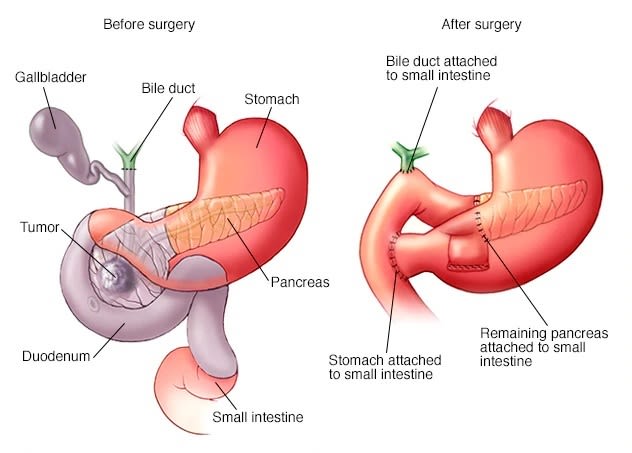
Among common cancers, pancreatic cancer has one of the poorest prognoses. Because pancreatic cancer often grows and spreads long before it causes any symptoms, only about 6% of patients are still alive five years after diagnosis.
For some pancreatic patients, however, a complex surgery known as the Whipple procedure may extend life and could be a potential cure. Those who undergo a successful Whipple procedure may have a five-year survival rate of up to 25%.
The classic Whipple procedure is named after Allen Whipple, MD, a Columbia University surgeon who was the first American to perform the operation in 1935. Also known as pancreaticoduodenectomy, the Whipple procedure involves removal of the "head" (wide part) of the pancreas next to the first part of the small intestine (duodenum). It also involves removal of the duodenum, a portion of the common bile duct, gallbladder, and sometimes part of the stomach. Afterward, surgeons reconnect the remaining intestine, bile duct, and pancreas